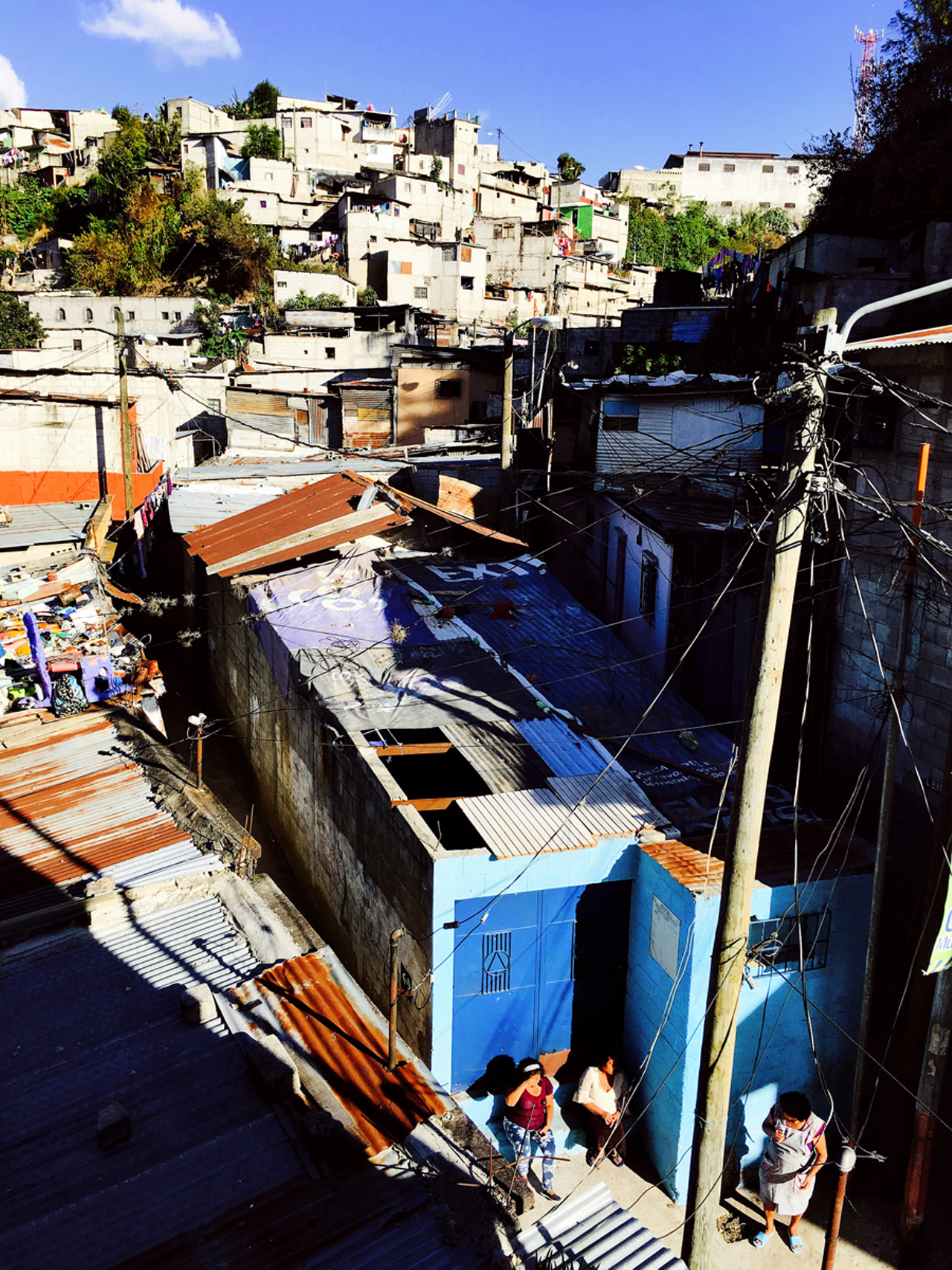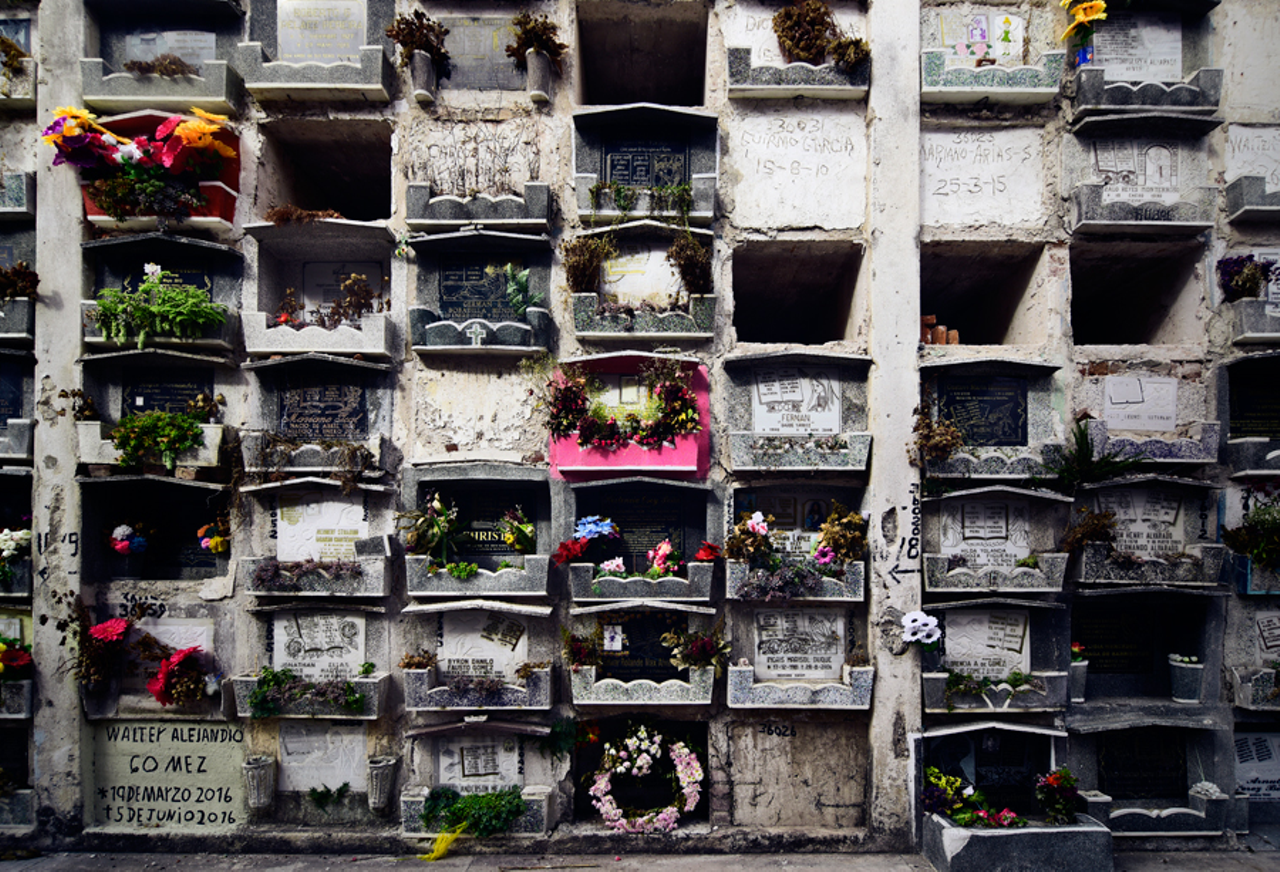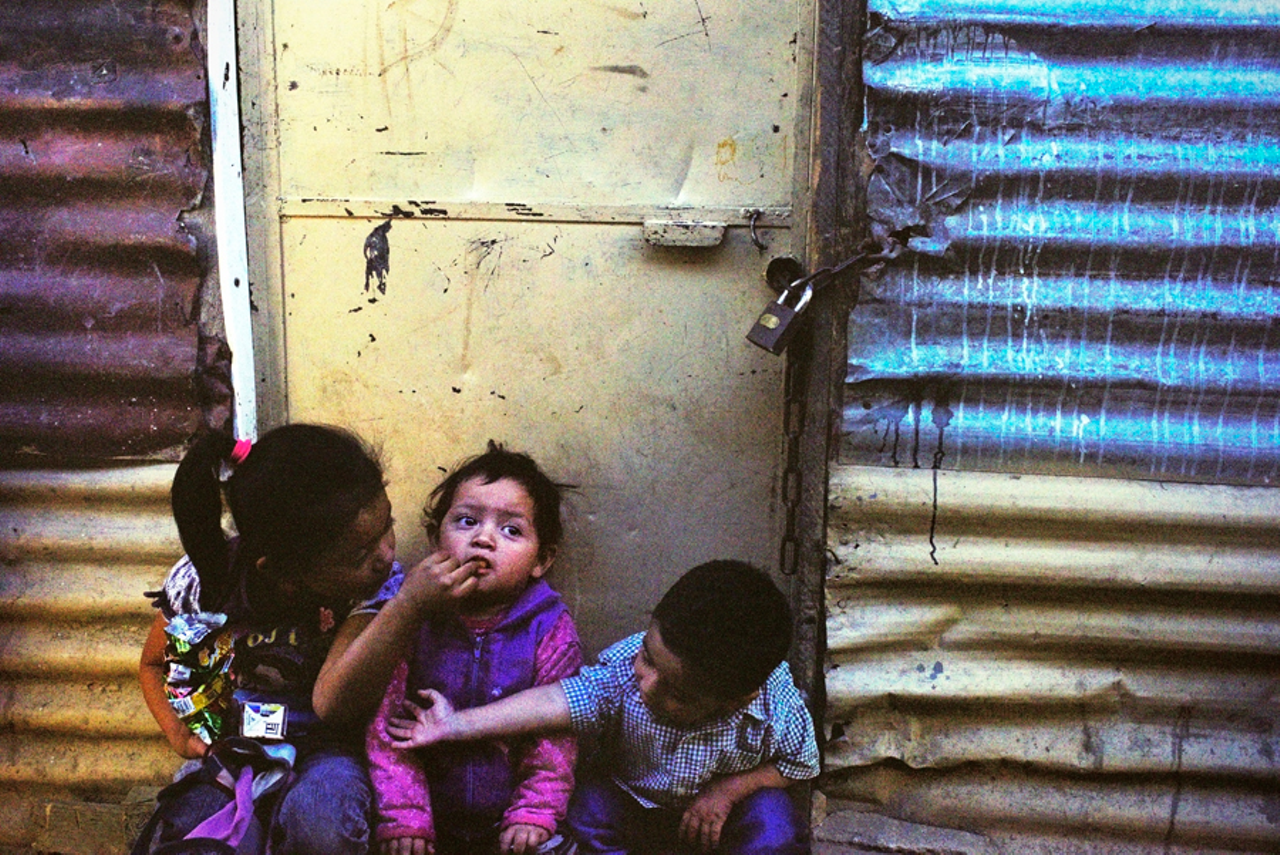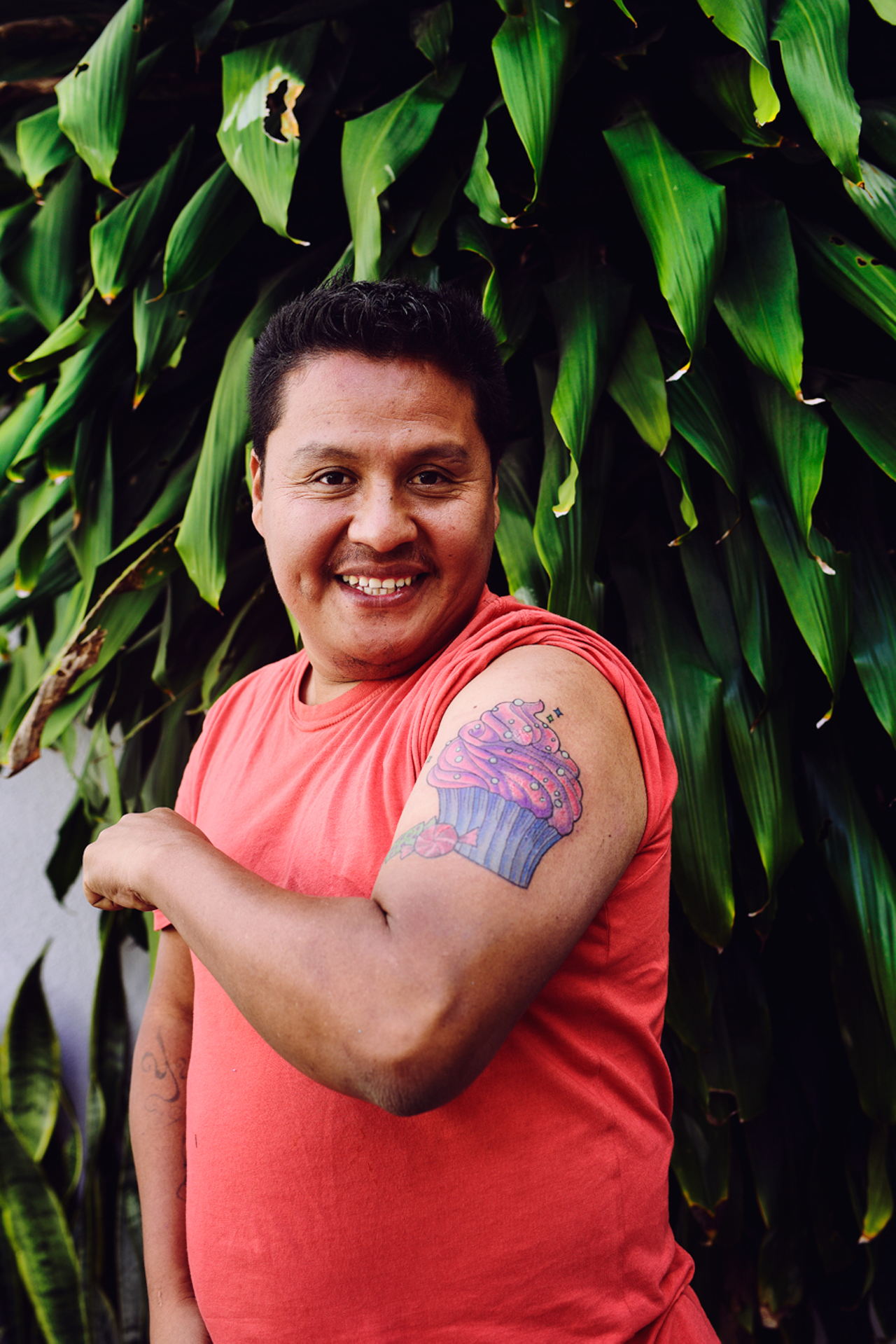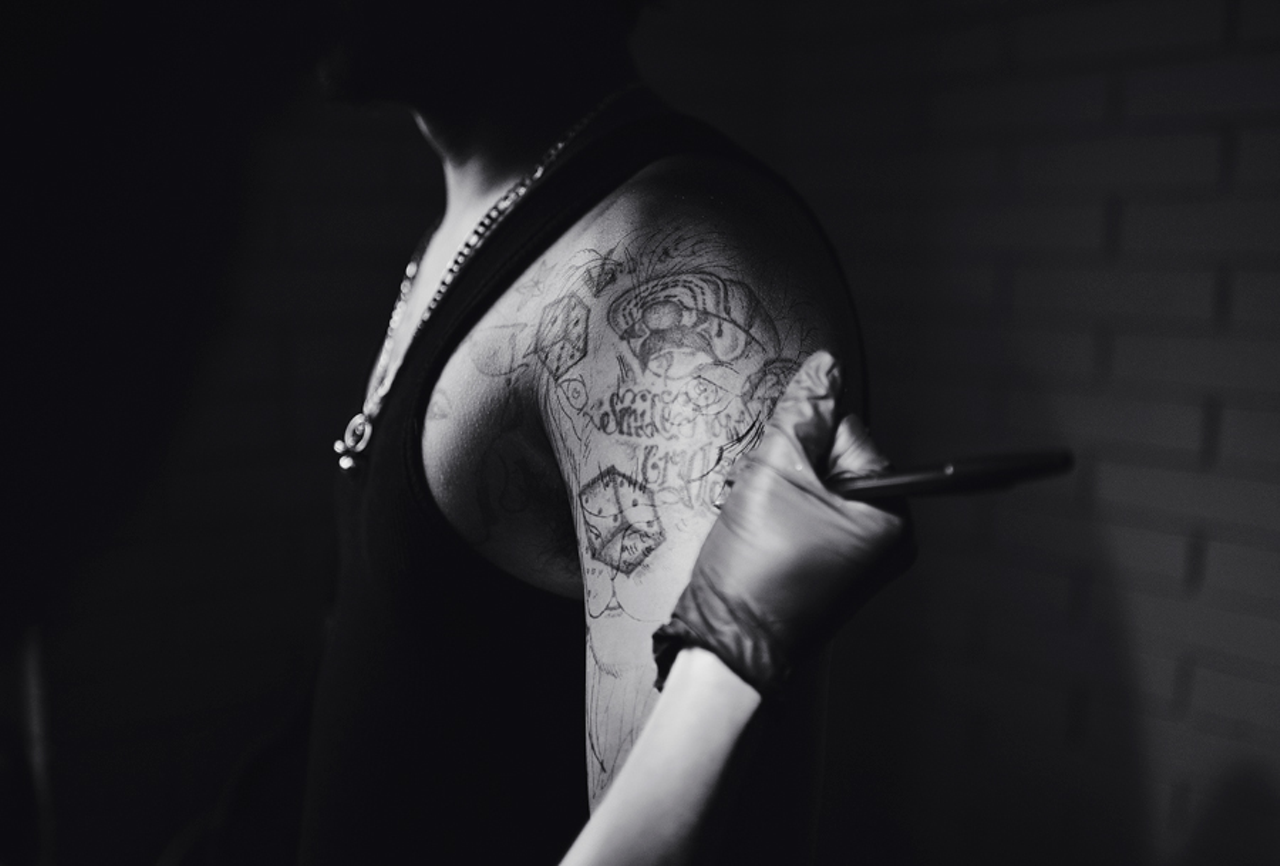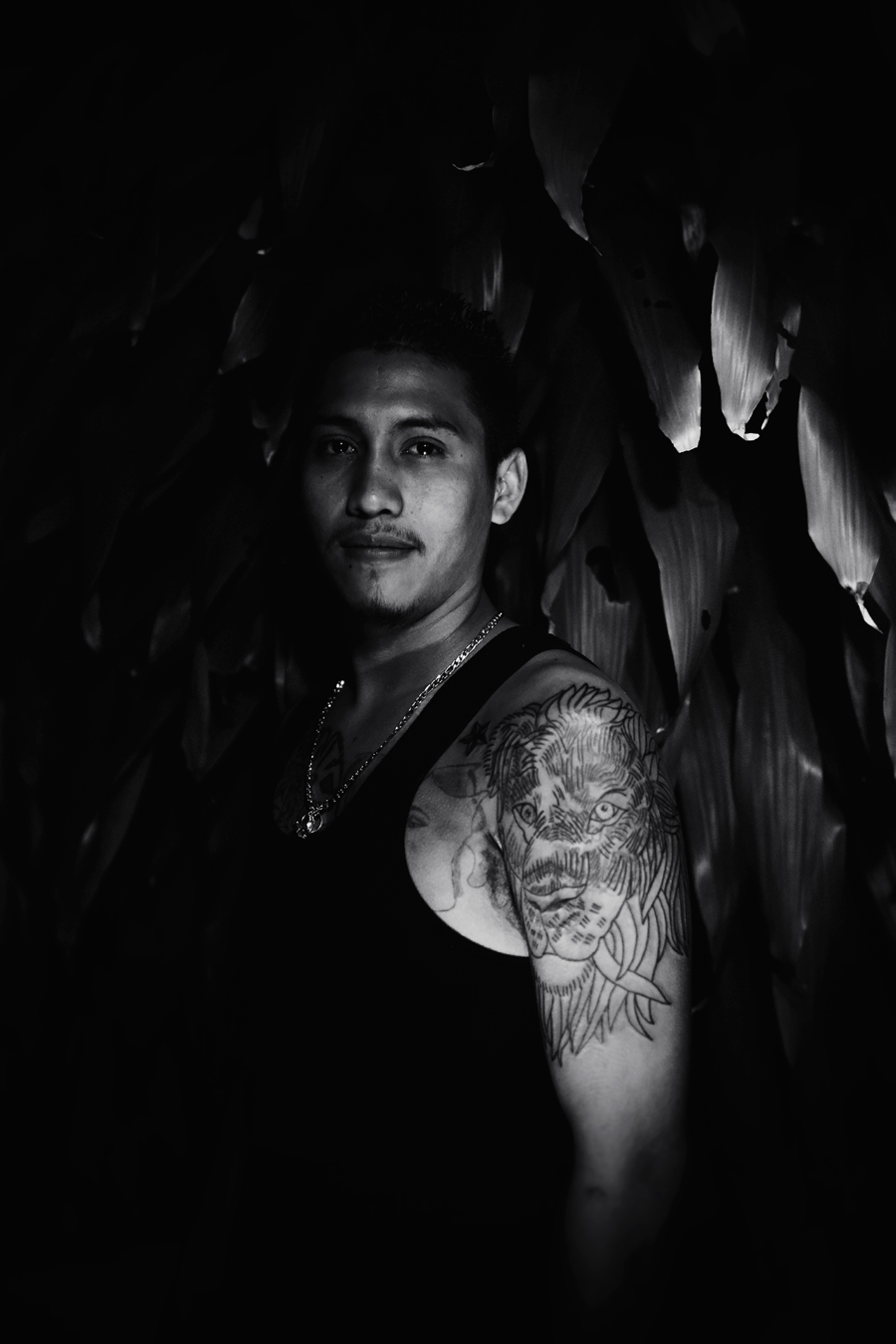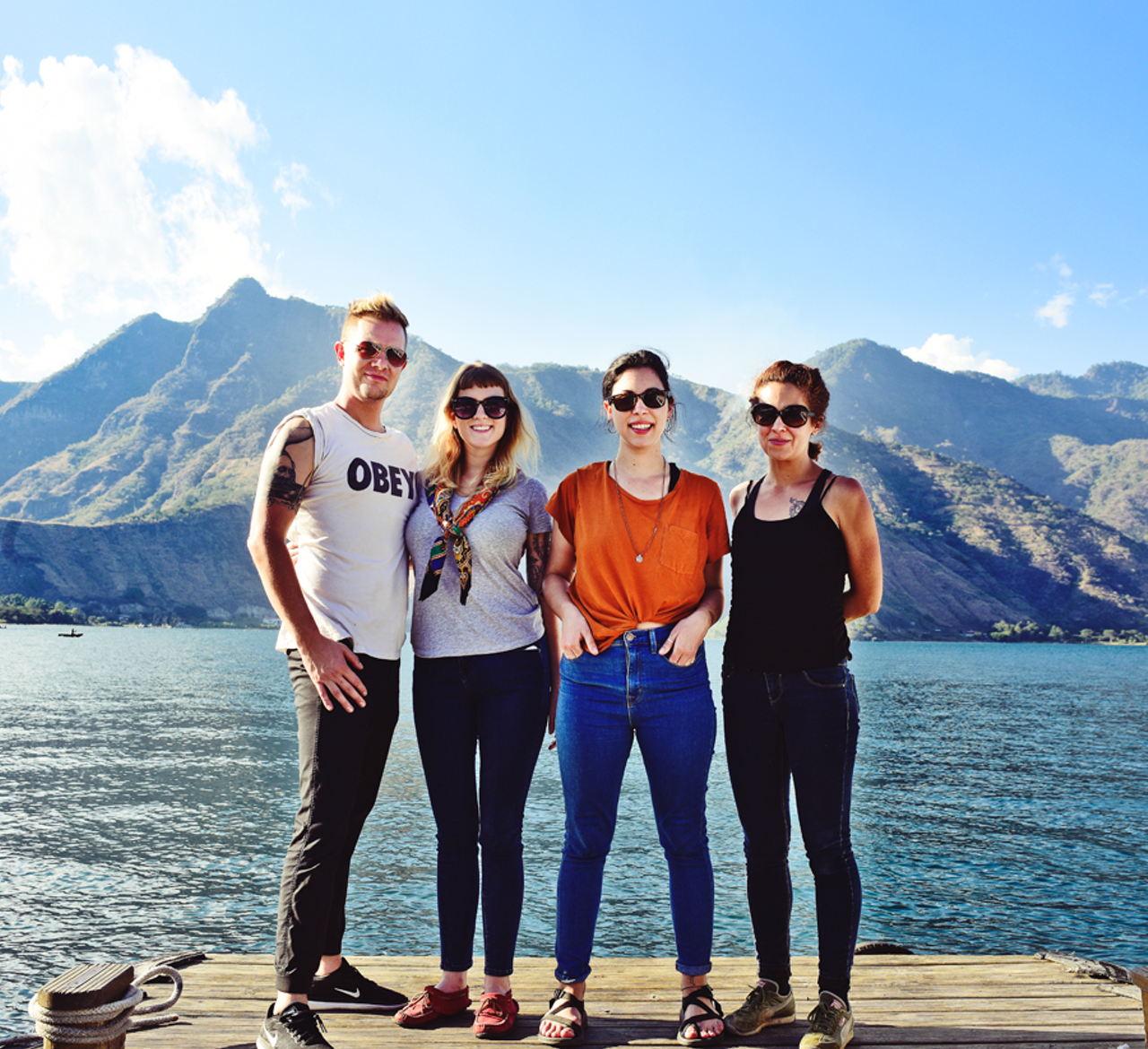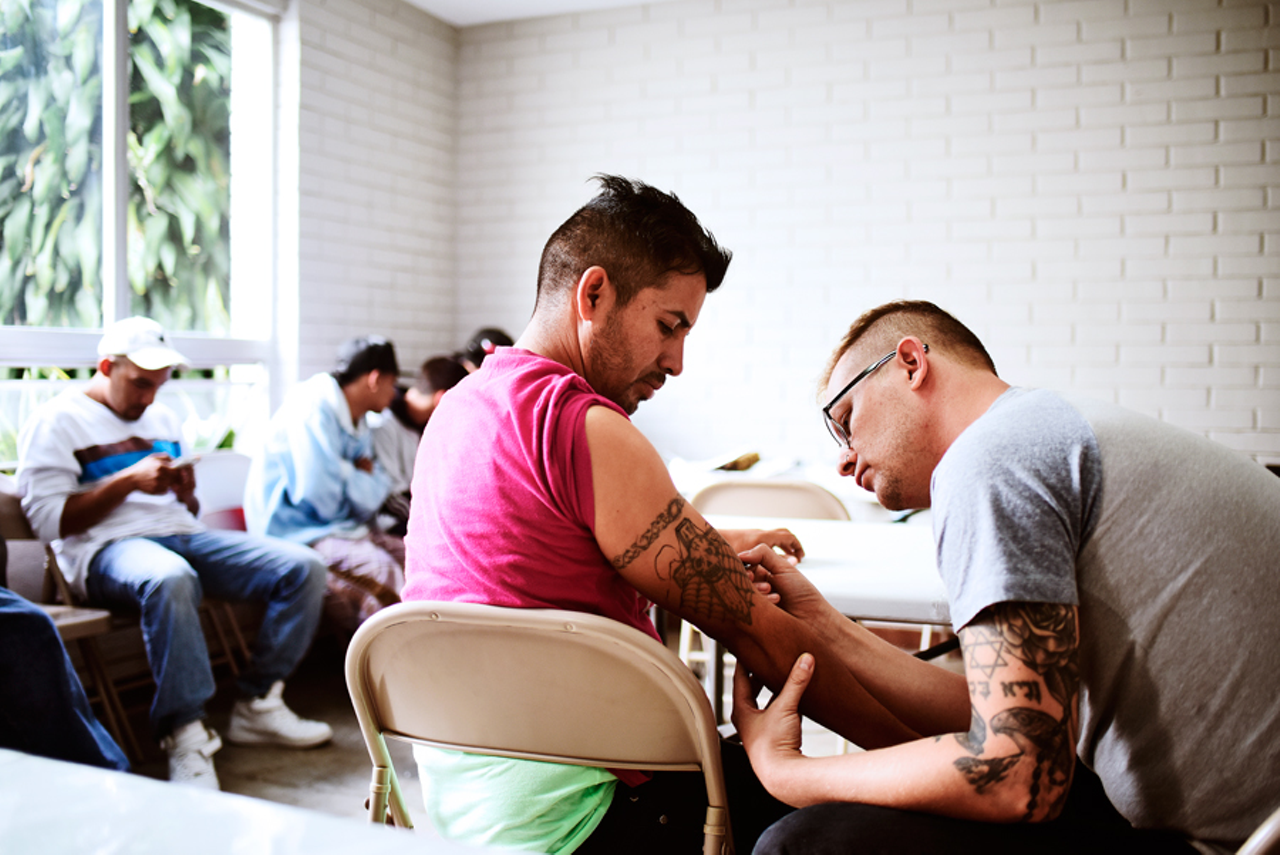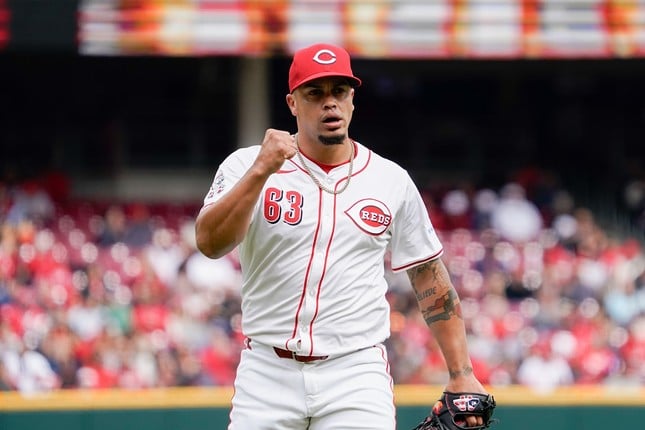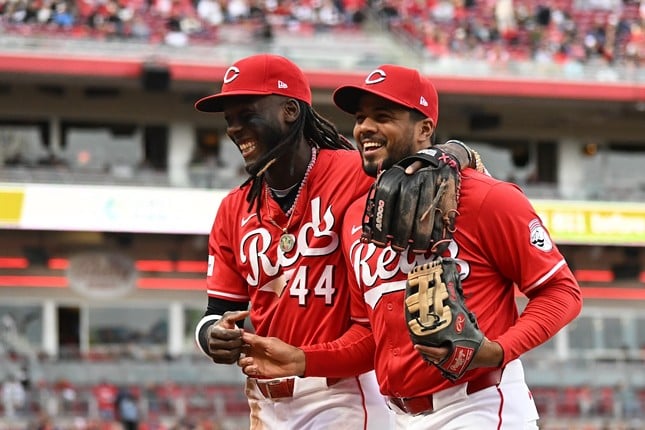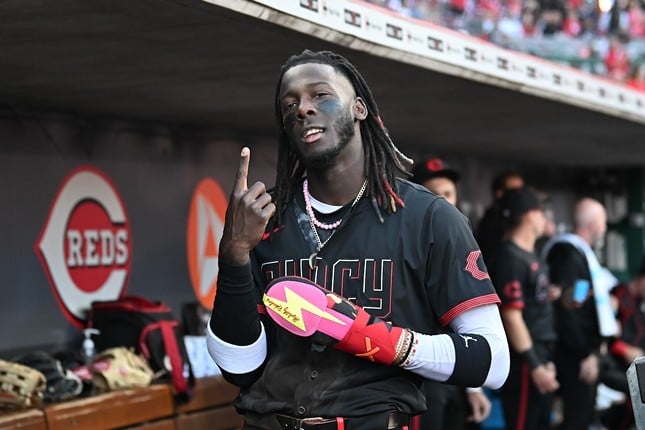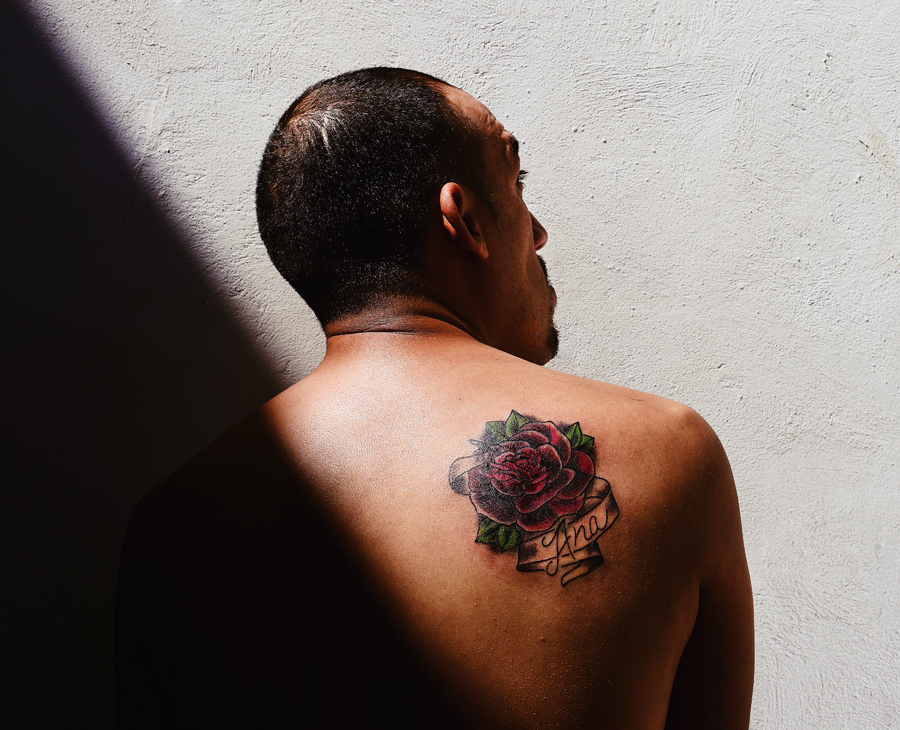
Ten years later, this past January, Griswold spent 10 days in Guatemala with part of his White Whale Tattoo team, Niki Woltja and Jaclin Hastings; his wife, Becki; and a handful of assistants and photographers, including former CityBeat photographer Jesse Fox, exploring the country and also working with aid organizations and grassroots community leaders to do cover-up tattoos for around 30 former gang members who had re-entered society. The following is Jeremiah’s retelling of that experience.
The Beginning
In 2007, I decided to sell my house and quit my job and move to Guatemala. I had reached a point where I was trying to figure myself out. I just wanted six months with no strings attached where I could do whatever I wanted — I wanted to volunteer; I wanted to learn about people who were doing really cool things down there. So I volunteered a few days a week and I explored the country a few days a week.
Guatemala is about the size of Ohio. And it’s mountainous. There are volcanoes everywhere. It’s 75 degrees most of the year. It’s called the “land of eternal spring,” so there are beautiful flowers wherever you look, and at the same time there are rusty metal homes and there’s poverty and there’s garbage. It’s such a stark contrast all the time.
Guatemala City is divided into these zones. La Limonada is in Zone 1, I believe. It’s the largest slum in Central America. From what I understand, La Limonada began in the civil war when indigenous Mayans who had lost their land came to the city looking for help. Families that were torn apart — mothers and their children after their fathers were killed — needed a place closer to the city that had access to things. The city really had nothing to offer them so people started building these shacks in what is basically a big ravine and it became a kind of community.People who grew up there say just 20 or 30 years ago, there was land and trees growing on the sides of the ravine, and now it’s completely barren of that except for all of these cinder block and corrugated metal shacks just stacked on top of each other. The police won’t even go into La Limonada because of the gang violence. They’ll sit on the edge of the community and make sure people aren’t coming out, especially gang members, but they wont go in. There’s this law of the land there.
When I asked what La Limonada stood for and why it was called that, the story I was told is that it means “the lemonade.” The reason is because it’s kind of bittersweet. You see that in the character of the people who live there. When you walk around, people are very proud of their homes and they’ll welcome you in and they’ll share whatever they have with you. But there’s also this sense of, as you look around behind you, there are these bullet holes in the walls and this sense that you have to be really strong and really careful to live there.
In 2007, I had been serving in La Limonada in the schools — volunteering, teaching English, just doing random building projects, whatever I could do. There was only one school at the time there and the woman who ran that school — her name was Tita — she was the closest thing I had ever seen to Mother Teresa. People call her “Hermana Tita,” Sister Tita, and when she walks through the streets everyone comes out of their homes to hug her and kiss her and you can just see this impact she’s had on La Limonada over the past several decades.
In the beginning, Tita was visiting gang prisons and working with people trying to get them out of gangs. The story Tita tells is that she saw so many of these gang members killed that she had gotten to know that she became very frustrated and said, “Instead of trying to drag the kids out of the river, I’m going to go upstream and see who’s throwing them in.” And that led her to La Limonada, where there was a lot of gang recruitment.
I was also working in the gang prisons. The two main gangs in Guatemala are the 18th Street and MS-13, and they are rival gangs. In a lot of ways it’s one of the big issues when they have a presidential election in Guatemala; the first questions for candidates is, “What are you going to do about the gang issues?”
The Guatemalan civil war in the ’80s left a lot of people without families and a lot of kids without fathers so the gang in many ways became a surrogate family for them. The story I kept hearing was that these really young boys would join the gang looking for that belonging and family and money and eventually realized they weren’t getting those things and wanted to get out of that lifestyle.
Even if they left the gang lifestyle, guys who would get out of prison and go back on the streets could be targeted for their gang tattoos. I was seeing that literally lives were being taken because of gang tattoos. Guys would be on the bus and police would come on the bus and look around for gang tattoos; sometimes they would “accidentally” put someone from the 18th Street gang into an MS-13 prison, just for having a gang tattoo. And within minutes we’d get a phone call, “Hey, they’re taking our homie over to the other prison. You’ve got to get there.” And by the time we got there — this happened to me while I was there — at least one guy would be decapitated and they’d be playing soccer with his head and burning his body because they were in the opposite gang.
Something as simple as covering up a tattoo could be a lifesaving thing and that blew my mind.
At that point I flew down one of the best tattoo artists I knew, and he was doing these cover-up tattoos (for former gang members) while I designed them, like a mini assembly line. I have always drawn and been an artist, and that for me was the connection of how art could actually help save someone’s life.
I really dug into this philosophy of philanthropy and began to ask more questions like, “What do these communities need?” And “How can I serve?” instead of me showing up as a particular white American male and saying, “Here’s what I think you need.” So I started to ask (myself) what I really wanted, and what I really wanted to do was what I always wanted to do, which was to be an artist and to somehow use my artwork for social justice. And at that point the tattoo artist offered me an apprenticeship when I moved back to Cincinnati. That’s when I started tattooing.
My first machine, I wrapped it in Guatemalan currency so I could always be reminded of why I was tattooing.
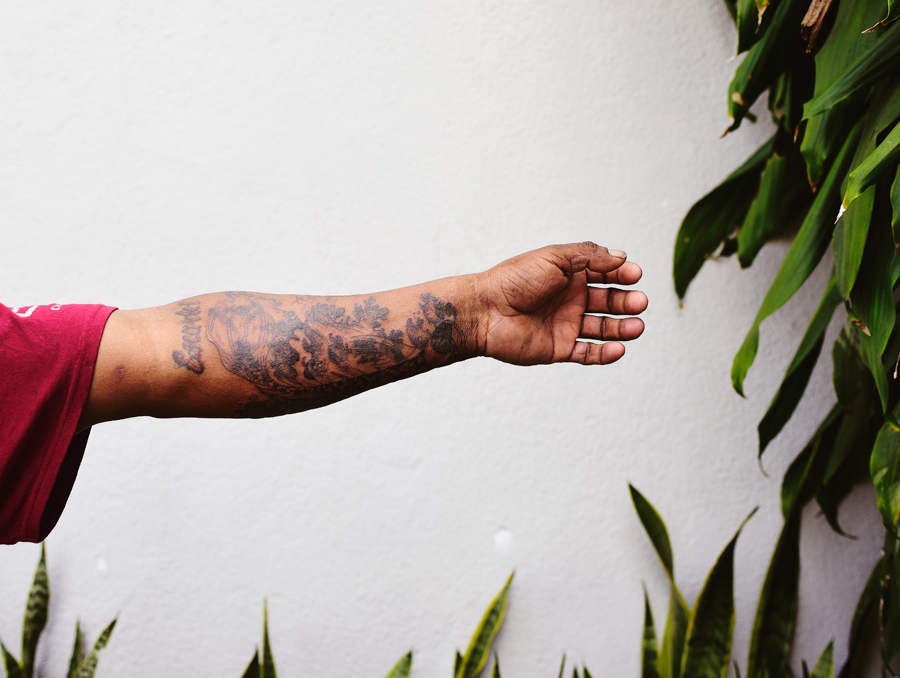
The Trip
When I brought down that artist to Guatemala and he did a handful of cover-ups, it was so powerful to me that I have always wanted to go back with a team of tattooers because I knew the need was everywhere. I’ve been wanting to do this trip for 10 years. For it all to come together, the support of the Cincinnati tattoo community and clients who have just poured their heart out, it was just an overwhelming thing to see happen.
We did Flash Day (where walk-in clients can pick a predetermined tattoo design from a menu) and that was the biggest fundraising endeavor. Most of our artists are booked out months in advance so we’re appointment-only, but we did a first come, first served and opened our doors at 10 a.m. We raised about $9,000 that day and tattooed about 60 people. We also had a GoFundMe page and we had a lot of people donate that way, too. We had a lot of support.
We planned the trip around when Center for Transforming Mission (a local social change organization) and Joel (CTM’s director of leadership development) could host us because they were the ones who work directly with indigenous leaders on a regular basis, like our contacts Shorty and Fito. They set up hostels and places for us to stay and work.
Shorty is a former gang member who now works as a chaplain and visits prisons and works with guys in the gang prisons. He created his own kind of safe home for guys who were leaving the gang lifestyle and needed a place to stay. He also runs an outreach program for families in La Limonada.
Fito grew up in Zone 3 in La Basurero in the garbage dump scavenging with his mother and eventually got tired of living that way so he joined the gang. He and 60 other guys were a part of founding the MS-13 in Zone 3, and of those 60 he is one of four remaining alive. The rest have been killed. Fito now lives with his wife and daughter in Zone 3 and leads an outreach program trying to keep kids out of the gangs.
We had one day where we tattooed people from Zone 3 and one day where we tattooed people from La Limonada, and even on that day we had to have different times where members from opposing gangs were coming in.
Joel and Fito and Shorty sent us pictures in advance as much as they could of the tattoos we would be covering up. Some of the people getting tattooed had ideas of what they wanted to cover it with, but a lot of them didn’t and said we could do whatever we wanted. When I asked Joel about that, Joel said these people have lived in so much oppression their whole lives they can’t dream. They’ve allowed people to put things on them that they’re not proud of, so its really hard for them to think about what they want or about how something could be better. So when we can ascribe something of greater value or help them dream about what they want, it’s a really meaningful thing.
You typically have to cover an existing tattoo with something that’s very heavily shaded or has a lot of layers, so things like flowers work really well or dragons or fish or things with scales. We’re wracking our brains trying to figure out, how do we cover these tattoos? Some of them were very much game-time decisions.
I had a guy who had these gang symbols that were all intertwined on his arm. He was one of Shorty’s contacts. When we told Shorty we’re coming down and we can take this many cover-ups, he was high priority on the list. Shorty and four or five different organizations who were working in different neighborhoods went out and said, “This guy, this guy, this girl, these are high priority” — people who are already out and living in fear every day. And then there were situations where we literally knew next to nothing, we just knew that this was really important and if the story of their tattoo or cover-up got out, it could endanger them.
But this guy was a sniper in the Guatemalan mafia, in a gang mafia, and he wanted to get out of the gang. He wanted to cover his tattoos with Lake Atitlán, which is this beautiful lake surrounded by volcanoes in Guatemala. Aldous Huxley calls it the most beautiful place in the world — the Mayans believe that’s where their creation story took place — so we just had to draw it on there and it turned out really cool and he was super ecstatic. It was fun to cover those spider webs and things up with volcanoes and waves with a little boat.
To see one person being brave enough to break that cycle, and you see that in all of these stories, people really trying to break that cycle, whether it’s poverty or violence or all of them combined. I could not imagine this guy killing people. He was the sweetest, really quiet.
I also did a tattoo for Otto. This one was not a cover-up; we had done a cover-up for Otto’s son Christian.
Otto was a guy who grew up in La Limonada. He remembered being a little kid and stirring the stew one day and he found some meat in the stew. He was so excited because their family never had money for meat until he realized the meat was from a rat that had fallen into the stew. At that point, he was like, “I’m tired of living like this.” He had seen gang members with nice clothing. He was like, “I’m going to go make some money for my family.” He was 7 years old.
One day he went to rob a bus with a couple of guys in the gang and he had a little girl at gunpoint and the little girl said, “Here’s all I have.” It’s next to nothing. And she said, “Please don’t kill my mom.” He realized, well, why am I robbing from the poor? The only reason I did this is because I was poor.
At that point he decided to leave the gang and started making shoes. Now Otto has this shoe-making business that makes these beautiful shoes and he employs seven other guys who have left gangs to make shoes. One of the things they do every year is make shoes for all the school children in Tita’s school in La Limonada.
That was an incredible tattoo for me. He got this Bible verse that said, let’s see if I don’t butcher this, “God gives the most difficult battles to the strongest warriors.”
At the end of the tattoo, he asked what size shoe my wife wears. And he brought out these shoes he had made for her.
It was really powerful to hear that and then to hear his son Christian’s story, which is a beautiful cover-up that Niki worked on. Christian was also in the gang. He was shot twice and it severed his spine so he’s now in a wheelchair. They live in La Limonada still, but Christian is an artist and he’s taught himself to tattoo. Otto has let Christian practice on him so he has all these tattoos that Christian did and they look really good.
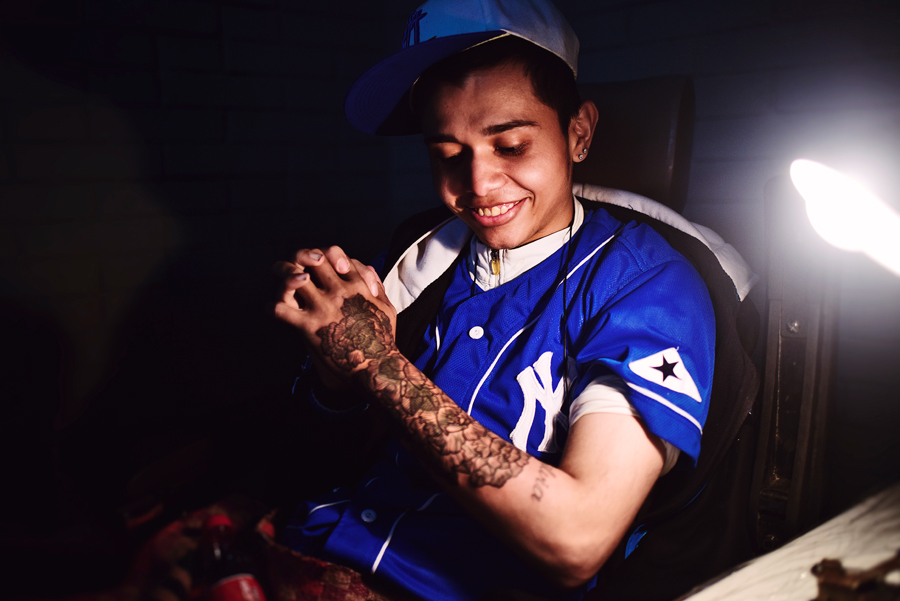
A couple years ago, Tita told me about Christian, so I had sent a tattoo machine down for him to use. That machine was stolen by some guys, so he made his own machine out of this tiny little Walkman motor and a button and a pen cap and a phone charger.
Niki got to do Christian’s cover-up and Gar, Niki’s partner who is also a tattooer and came with us on the trip, had a machine and he gave it to Christian. Christian was so ecstatic that in return he gave Gar his homemade machine. It was a very powerful moment for Gar and pretty symbolic of this majorly beneficial relationship that we found in Guatemala.
To me it seemed like Fito and Otto and Christian and Shorty, all these people had that common theme where they had stared into the abyss and said, “I’m going to go do something with my life and I’m going to help pull other people out of that abyss.” If all we can do is show up and give them tattoos and that somehow helps, that’s amazing.
One of the things Fito said was, “You are helping these people cover something they were ashamed of and giving them something to be proud of and in some way help redeem their life.” I think because some tattoos can also be a symbol of our innermost beings and identity, to help someone who is trying to change their identity, that to me was very humbling.
There’s a little bit of responsibility for us in Cincinnati and us in the United States to do a little reparation for some of the damage we’ve done. If you dig a little bit back in history and you look at U.S. relations with Guatemala, our country is responsible for a lot of damage. Some people, the way they explain the story of the garbage dumps and La Limonada is really a result of direct relations, historically and politically between the United States, the United Fruit Company and Guatemala.
There’s an interesting book called Bitter Fruit that details the accounts of the United Fruit Company and everything that happened with their land. Eventually the United Fruit Company was bought out and turned into Chiquita Brands by Carl Lindner Jr., so there’s that Cincinnati connection there, too.
When we started White Whale, it was always a goal to give 10 percent of our profit to works like Guatemala and then to do this trip maybe once a year and maybe figure out how to do tattoo cover-ups here as well. I’ve become convinced that if you truly listen to what you want and you do what you’re passionate about, the world needs that gift and that is going to help people. You don’t have to sell yourself into something you don’t want to do to make a difference in the world.
This trip is just kind of one example of endless opportunities for people to do what they love to do and take themselves out of their normal context and put themselves in a situation that may feel a little uncomfortable, and come out the other end of that experience experiencing something that was really meaningful and life changing and beautiful. When you fall in love with the country, with Guatemala, and fall in love with the people, it’s mutually beneficial. Like you guys are giving me a life. And if I can give back something, great. That’s the dream I think.
WHITE WHALE TATTOO will host a Flash Day to raise funds for another trip to Guatemala 11 a.m.-6 p.m. May 20. For more info, visit whitewhaletattoo.com or gofundme.com/goguate2017.



